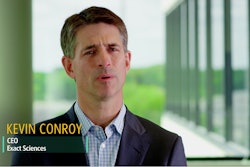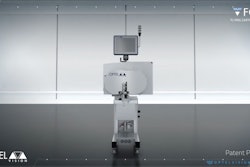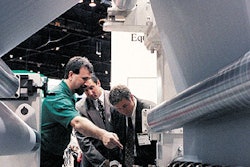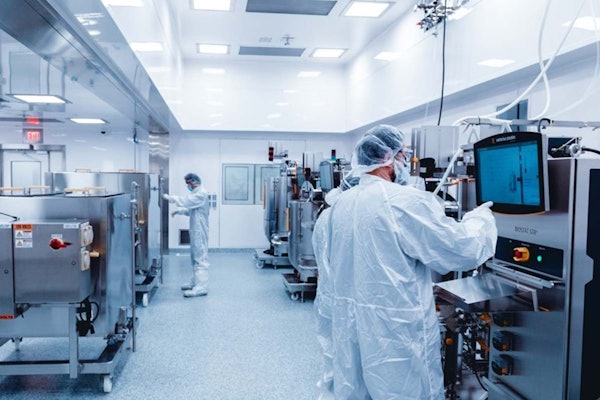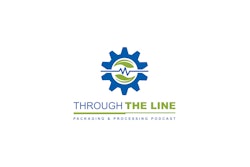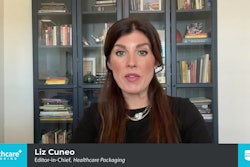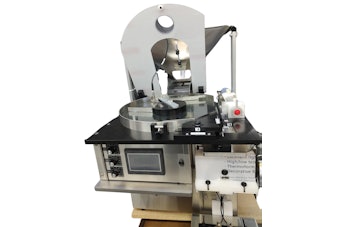Healthcare Packaging (HCP): Has packaging taken a back seat in the development of a product?
Brian Wagner (BW): Yes, that has been the case in my career going back 24 years, at least in the biggest of companies. In smaller and medium-sized companies, packaging is forced to be part of the upfront discussion. As companies grow and the process becomes more complex, artificial walls grow up between functions. So marketing, product development, package development, and all these separate functions have different goals and languages. If you look at things from the consumer's perspective when they buy and use a product, they are linked. The product is the combination of the product and the package, the brand equity, a consumer's prior experiences, services such as the company's Web site and a 1-800 number, and all of the sustainability components as well. (PTIS's Product Formula = product + package + brand equity + experiences + services + sustainability components.)
HCP: And it may be that packaging is what consumers use to make the final decision about what to buy on the shelf, yes?
BW: Yes, it clearly is. And you really can't ask the consumer, because it's linked in their subconscious, but it's such an important element.
HCP: Who is making packaging decisions in the corporate world?
BW: Marketing is making a lot of decisions on packaging. The way the process tends to start is at the fuzzy front end or what a lot of people refer to as "pre-concept work," which is typically a marketing research function, and sometimes involves gaining consumer insight through focus-group observational research, trends analysis, and ideation. Packaging professionals are seldom invited to participate at this stage. So, if you are in the packaging or the supply chain function, working to get involved at the front end you have to try to help educate your bosses and other key stakeholders on the importance of packaging. It's really new to them. So you need to build a fact-based story. We have been consulting for eight years, and we spend a lot of time doing that, but frankly it's not for the faint of heart. We really believe that packaging is a critical enabler and differentiator, but there are few published reports quantifying the value of packaging. So, one of the things that we often do for these companies is develop simple case stories. They are fact-based, quantifiable, and memorable.
HCP: Packaging can be part of a strategy to reduce costs through light-weighting, down-gauging, or serving as a sustainable material. Why doesn't that convince management of packaging's importance?
BW: That's the piece of packaging that executives tend to understand because it's on the cost-center side of the business. In accounting terms, packaging falls and resides in cost of goods sold. So, the opportunity to reduce costs, make lines more efficient, and focus on sustainability-reduction initiatives are issues companies have been doing for years, because they get that piece.
HCP: What piece don't they get?
BW: They don't get the profit-center side in which packaging is really part of the brand-that it's part of the advertising budget, part of promotion, that it can actually elevate the value of the company's brand. That tends to be where growth and innovation happen. You can innovate on the cost-saving side as well. But it's the profits-center growth side of the world where packaging is not really well understood.
HCP: Now I imagine that affects packaging across all types of industries. Let's look at the over-the-counter pharmaceutical business in particular. This segment would likely lag behind food and beverage in this area, yes?
BW: Yes, very much so. Ten years ago, when we did benchmarking work, I would have told you that if you wanted to look for innovative packaging, look in food and beverage. Five years ago, it started moving more into personal care and health and beauty aids. If you are in a major food and beverage company, you do this preconcept work and develop graphics and branding, and eventually the packaging department gets called in to say, 'We need to put this in a box or a bag or something.' The right way to do that is to involve packaging in the early preconcept work and to provide innovative ideas and opportunities for packaging to create relevant points of difference. This can also lead to speed-to-market and intellectual property benefits.
What we have seen in pharmaceutical OTCs is a different concept of the commercialization process. In the OTC world, you start with very technical needs. The concept stuff is really about a molecule; it's about a drug being developed. Then, for the drug, there is consideration given for packaging, but it tends to be far more functional: How much barrier does it need? How much protection from moisture in the environment? You focus on the efficacy of the product. That process takes months. So then you have put the product into a blister or a bottle or a pouch, and that goes to the Food and Drug Administration. Then there is consideration given around functionality from a child safety standpoint for instance. So it's driven by legislation. Several months go by, and then you have the product in a bottle or a pouch or a blister, and in the last stages, it gets approved and readied for commercialization. Then you thinks about putting 12 of them in a carton or another secondary container. There is really no time to innovate. There is very little time given to things like allowing the package to help with consumer compliance, or allowing the package to help the pharmacist or the doctor who is dosing this or prescribing it. Therefore, take the opportunity to work on those elements early on to identify new alternatives, differentiate your brand, and innovate in your product categories.
HCP: What are some of the key tips or best practices that you might recommend for someone in this pharmaceutical arena with regard to sustainability?
BW: First and foremost is to think much earlier about what is being developed from a triple bottom-line sustainability standpoint. Address end-of-life issues, such as where is the packaging eventually going to go? How is it going to be used-by the hospital, doctor, pharmacist, and consumer? Start with its end of life and work backwards. Understand that sustainability is the environmental piece. Sustainability in its broader sense is about helping the planet. But also think about things like how the package help with patient compliance. By starting this process earlier, you can also work to capture Intellectual Property protection.
HCP: You're asking a lot of pharmaceutical packaging-not only to get the proper molecule out there, but also to package it and have it provide oxygen- and moisture-resistance. And now you also want to sell it against comp-eting products and have it be sustainable?
BW: It's a huge challenge, yet I think it's a bigger challenge the way they do it today, which is waiting for certain approvals to happen before they figure out that end-of-life scenario and consumer considerations. It's the last stop, and by the time they get to it, there is little or no chance to innovate. Most new packaging capital projects require at least 18 months to implement. Speed-to-market requirements and late decisions result in the use of the same old packaging and equipment. They have invested millions of dollars in FDA approvals and in all the other aspects of the product. The last thing they do is find the equipment and the package to put it in to rush it to the market.
HCP: What can they do differently?
BW: One thing we do at PTIS with customers is a Consumer Package Roadmap™, where we help them understand the imagery and perceptions about a packaged product's colors, shapes, materials, and fonts-working with specific consumer groups and channels. Where appropriate, we apply Universal Design principals. Does the packaging consider their eyesight, their dexterity, and so on? So, we create a toolbox and work with the company to develop a consumer-based packaging roadmap-that's not product-specific. They can then go to that tool rather than having to retest every time. Companies need to start developing a database of knowledge and insight and allow or consider things such as what kind of symbols work for consumers? When it comes to compliance, create a checklist to put in the 'toolbox.' Will the package contain 24 pills? Will you use RFID (radio-frequency identification) or other technology that actually triggers something electronically? We don't see enough companies building that kind of knowledge, operating guidelines, tools, or processes that they can tap into. They are very reactionary.
HCP: We also hear that some of these OTC products can learn from product packaging used outside the industry, such as food and beverage products. Is this a valuable way to help learn what works or what doesn't work in terms of packaging?
BW: Yes, that's a great example. We lead One Day Solutions workshops for companies at New Product Works [www.arborstrategy.com/asg/newproductworks/newproductworks.html]. NPW is a PTIS alliance partner, with a collection of over 100,000 products gathered over the past 30 years, organized and cataloged across different categories, providing a hands-on, tangible stimulus.
HCP: The costs to introduce a drug have been estimated to be in the neighborhood of $800 million. Is it possible that companies are spending that on R&D and are then making packaging an afterthought?
BW: Right, that's what happens! With clinical trials for instance, the primary package is likely to be the same as the commercial version, but the secondary package can change dramatically. Things like sales samples for doctors can change tremendously. For this, research is a lot different than selling it to the consumer at retail. Sometimes the greatest influence [in packaging decisions] may be the doctor or the pharmacist.
One of the challenges is that evaluating the process upfront and involving consumers or users extends the time that it takes to get the drug products out to market and get the drug approved. Anything that can be done to reduce that amount of time allows companies to profit more quickly in the marketplace. We believe in having the product packaged and using those clinical trials as a great testing ground to try out different methods and designs, to understand how consumers are using the product, and to understand whether it's working or not. Ideally, you start with consumer insights, develop design alternatives based on the insights, and then test the designs with consumers. So when you do that a lot, you are that much more successful and frankly you can do it quicker.
HCP: How would you address the need for packaging materials to work efficiently on packaging machinery and packaging lines?
BW: That matters a lot. However, more and more companies are using contract manufacturers and packagers, which leads to some level of flexibility and the way you can go with existing equipment. The equipment piece is probably one of the biggest reasons that you want packaging to be involved early because most new packaging equipment will take 18 to 24 months to build, install, and get approved. If you really want to have a chance to customize something, you want to understand what your options are a lot earlier. Then you can build lead times into the process and into the pipeline.
HCP: Let's review here for a moment. If a company is developing a product, what internal groups should get together, and how do they convince management that packaging needs to be involved right from the beginning?
BW: You want input from almost every essential function early on. Gather the head(s) of R&D, marketing, finance, manufacturing/operations, procurement/purchasing, and innovation. Get finance folks involved early on in the process. They tend to get hammered because they come in to say 'no.' But the reason they come in to say 'no' is because they are brought late into the game when things aren't actually feasible anymore. They are really not a part of innovation and growth strategies in most companies. Packaging is part of the integrated solution.
And involving the people who are hands-on with the project can certainly help earlier in the process. They can also become naysayers when they aren't involved in the process earlier. They want input, but people may want what's easy for them, which isn't always what's best for the business.
We also believe in getting suppliers involved at those early stages and including them as far as the possible strategy of the product. Suppliers can bring so many more ideas to the table based on their depth and breadth of knowledge [that can often extend into industries beyond pharmaceuticals]. Same with contract packagers.
There are also some great new virtual tools that allow you to do that without having everybody in the room. Kodak and Paxonix are two examples of companies offering workflow management tools that [integrate] packaging.
HCP: What about bringing in top management to the table at the beginning of a project?
BW: In an ideal world, the CEO doesn't need to be brought in but you need him or her to bless the idea that packaging is part of the integrated solution and that everyone needs to involve them earlier in the process. It doesn't happen often. If you look at Procter and Gamble, they're a great inventor, and A.J. Laffley is a huge promoter of that. Everybody in the company-all 135,000 employees-would tell you that packaging is a critical part of everything they do. That needs to happen in more companies.
Brian F. Wagner is the co-founder and vice president of Packaging & Technology Integrated Solutions, LLC, and Global Sustainability Solutions, Inc. (www.ptisglobal.com). He brings more than 20 years of packaging experience with both end-user firms such as Kellogg's, Sara Lee, and General Foods, as well as suppliers, including Multiform Desiccants and Carton-Craft Corp. Wagner earned a Bachelor of Science degree in Packaging from Michigan State University and can be reached by phone at 800/875-0912, or by e-mail at [email protected].
Read more about packaging design at www.healthcarepackaging.com/go/4



